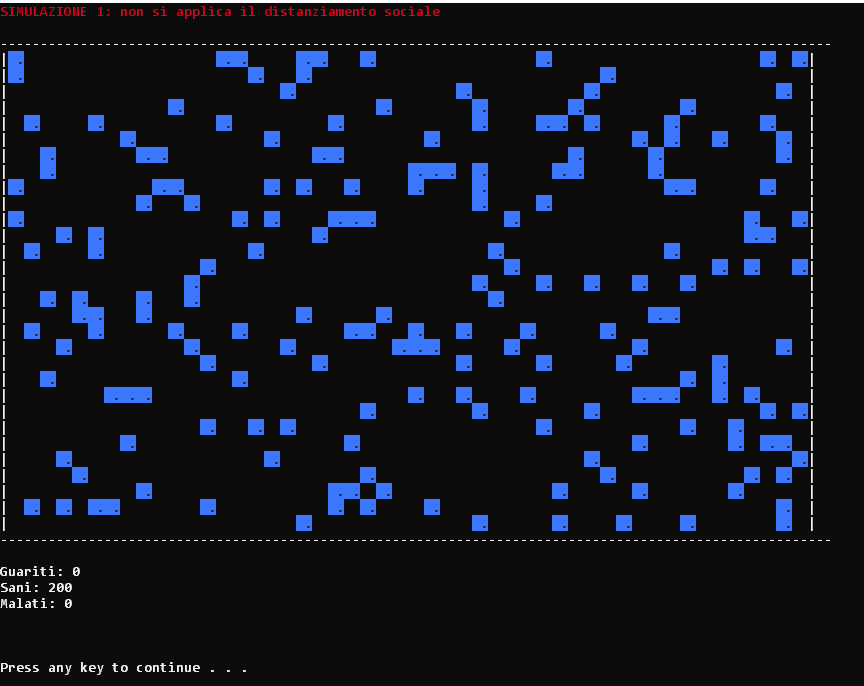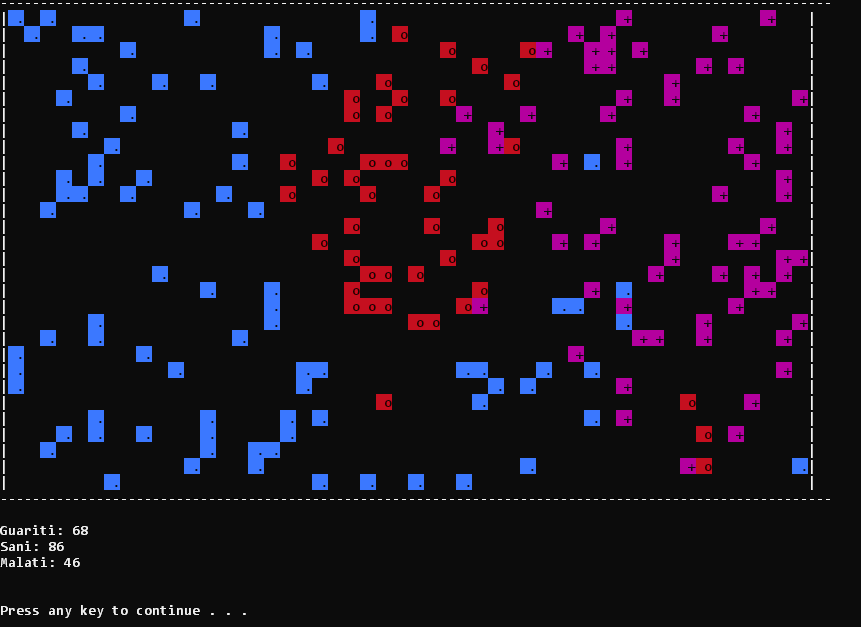Giulia got an exciting assignment from her teacher:
Write a C program that simulates (a simplified version of) COVID outbreak spreading across a population of 200 people. When a healthy person comes into contact with a sick person, the healthy person becomes ill, too. After some time, a sick person will recover. A recovered person cannot infect a healthy person nor become sick again after coming in contact with a sick person.
In more prosaic terms: the world comprises a 30*50 cell grid. Of these, 200 cells are randomly selected to be alive. Throughout the simulation, each of these cells can be in one of the following three states: healthy, sick, or recovered. If a cell is ill, at the next cycle, all neighbouring cells will also be diseased. A cell stays sick for 14 cycles. At cycle 15, it is healed. The simulation ends when all 200 cells are either recovered or healthy.
Giulia’s implementation was fine, but a couple of subtle bugs prevented it from succeeding, and that’s how I got involved. In general, she doesn’t ask for help, nor do I ask her about her progress. If she reaches out to me, it’s only for serious trouble, and when that happens, I enjoy working with her. Besides, while I do a lot C# these days, I don’t do C since aeons ago, so it’s great to get back to it every once in a while.
 Above, the healthy population inhabiting its 1500-cells world, right before the outbreak.
Above, the healthy population inhabiting its 1500-cells world, right before the outbreak.
 Halfway through the simulation, 86 cells are healthy, 46 are sick, and 68 are
healed.
Halfway through the simulation, 86 cells are healthy, 46 are sick, and 68 are
healed.
 End of the simulation. It doesn’t matter how many times you run it; the number
of people who were never infected is stunningly low by the end. Moreover,
a simulation like this one, albeit simplified, reveals how dramatically an epidemic
can spread if not contained with social distancing.
End of the simulation. It doesn’t matter how many times you run it; the number
of people who were never infected is stunningly low by the end. Moreover,
a simulation like this one, albeit simplified, reveals how dramatically an epidemic
can spread if not contained with social distancing.
I was pleasantly surprised by this assignment. Here we have a teacher who doesn’t constraint herself to the standard, well-established routine. Instead, she keeps her students engaged and challenges them. At the same time, she takes the chance to educate them on the current sanitary emergency. Giulia tells me that her teacher was inspired by a March 2020 Washington Post article: Why outbreaks like coronavirus spread exponentially, and how to “flatten the curve.” That’s excellent work. It includes several animated simulations, Giulia’s assignment being one of them.